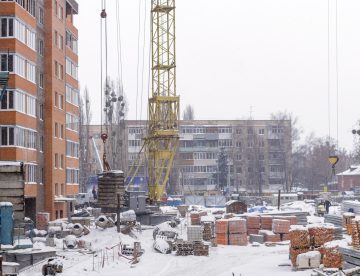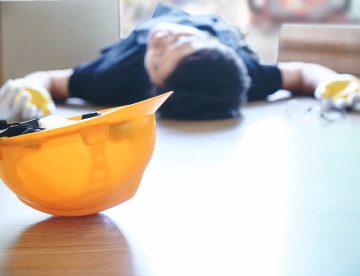
The recent cold snap is a reminder to us that working outdoors in such conditions is not exactly the most pleasant thing any of us could be doing and that, once again, it’s time for our industry to brace itself for the winter months ahead.
During these months, we all need to be aware of the potential hazards that come with harsher weather, recognise that some tasks could take longer to complete and be prepared to make adaptations when planning work activities.
If you’re working on site this winter, here’s our handy guide to surviving the cold.

If you’ve been working on a construction site in Britain for a while then it’s very likely you’ll have the had many experiences of working in rainy conditions.
While the odd shower isn’t so bad, persistent rain can result in some pretty unpleasant working conditions on site (and in other outdoor working environments). As well as posing a number of risks associated with workers getting cold and wet, rain can increase the chances of people falling victim to other hazards like slips, falls and accidents caused by poor visibility.
As we’ve had a few Autumnal downpours over the past few days, in this week’s blog, we’re talking about the dangers associated with working in rain and what steps can be taken to stay safe.

Did you know that, in the UK, even under our usually cloudy skies, up to 80% of dangerous UV rays can still get through. And, because of their heightened exposure to the sun, five outdoor workers a day in Britain get skin cancer and 60 people lose their life every year as a direct result. We hate to spoil the mood on this lovely, warm September day but, with the sun shining down on our outdoor workforce, it’s a good time to remind everyone of the dangers of the sun’s ultraviolet (UV) rays and it’s relation to what’s sometimes called the ‘invisible killer’. Find out what you can do to minimise the risk in today’s blog.

While strict health and safety measures have certainly reduced the number of injuries and fatalities in construction, the industry is still one of the most hazardous in the UK. Last year, construction workers suffered 61,000 non-fatal injuries and 40 people died as a result of workplace injury in our sector. What’s most frustrating is that the vast majority of on-site injuries are completely preventable. Today, we’re taking a look at four of the most common causes of accidents and offering some basic tips on what you can do to reduce the risks.

The use of asbestos in buildings has been banned in the UK for just over two decades but unfortunately the answer to the question of whether it still poses a danger is a definite YES. Asbestos is commonly found in buildings constructed before the ban and according to the Institute of Occupational Health and Safety…
